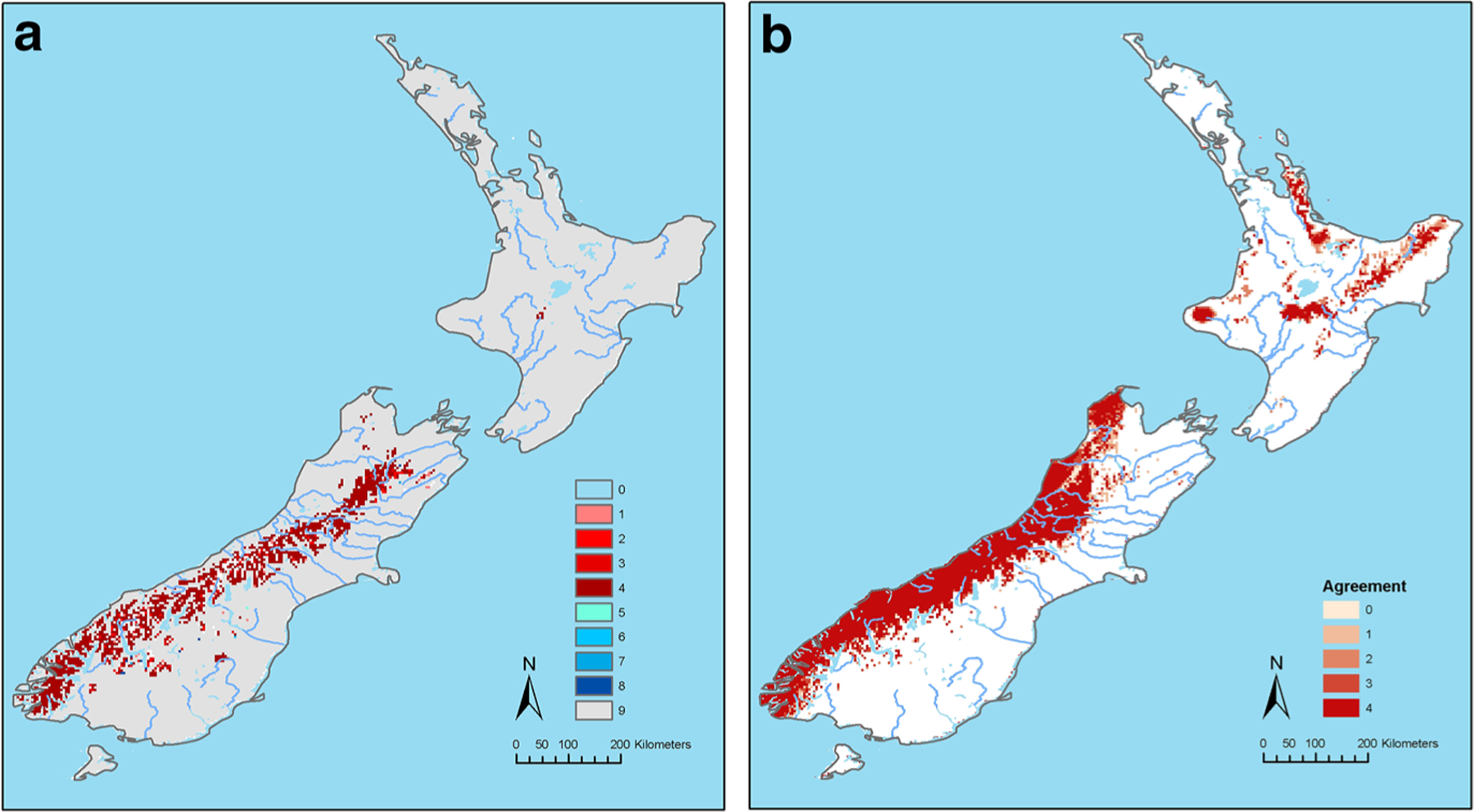Fig. 3.

a The agreement in predicted suitability of areas for Amblyomma americanum ticks between different Global Circulation Models (GCMs) under the Low Emission, Representative Concentration Pathway (RCP) 4.5 Emission Scenario. Where 1 = areas in which one of the four GCMs predicted suitability for A. americanum distribution. 2, 3, 4 = two, three and four GCMs predicted suitability, respectively. 5 = areas in which one of the four GCMs predicted loss of territory for A. americanum compared to the present-day distribution. 6, 7, 8 = two, three, and four GCMs predicted loss of territory, respectively. 9 = no observed change from predicted current A. americanum distribution. b Degree of agreement between Global Circulation Models (GCMs) on extrapolative prediction of suitability areas for A. americanum ticks under the Low Emission, Representative Concentration Pathway (RCP) 4.5 Scenario. Where 1 = Areas in which the prediction based on one of the four GCMs were strictly extrapolative. 2, 3, 4 = degree of agreement in strict extrapolative areas based on two, three and all four models, respectively
